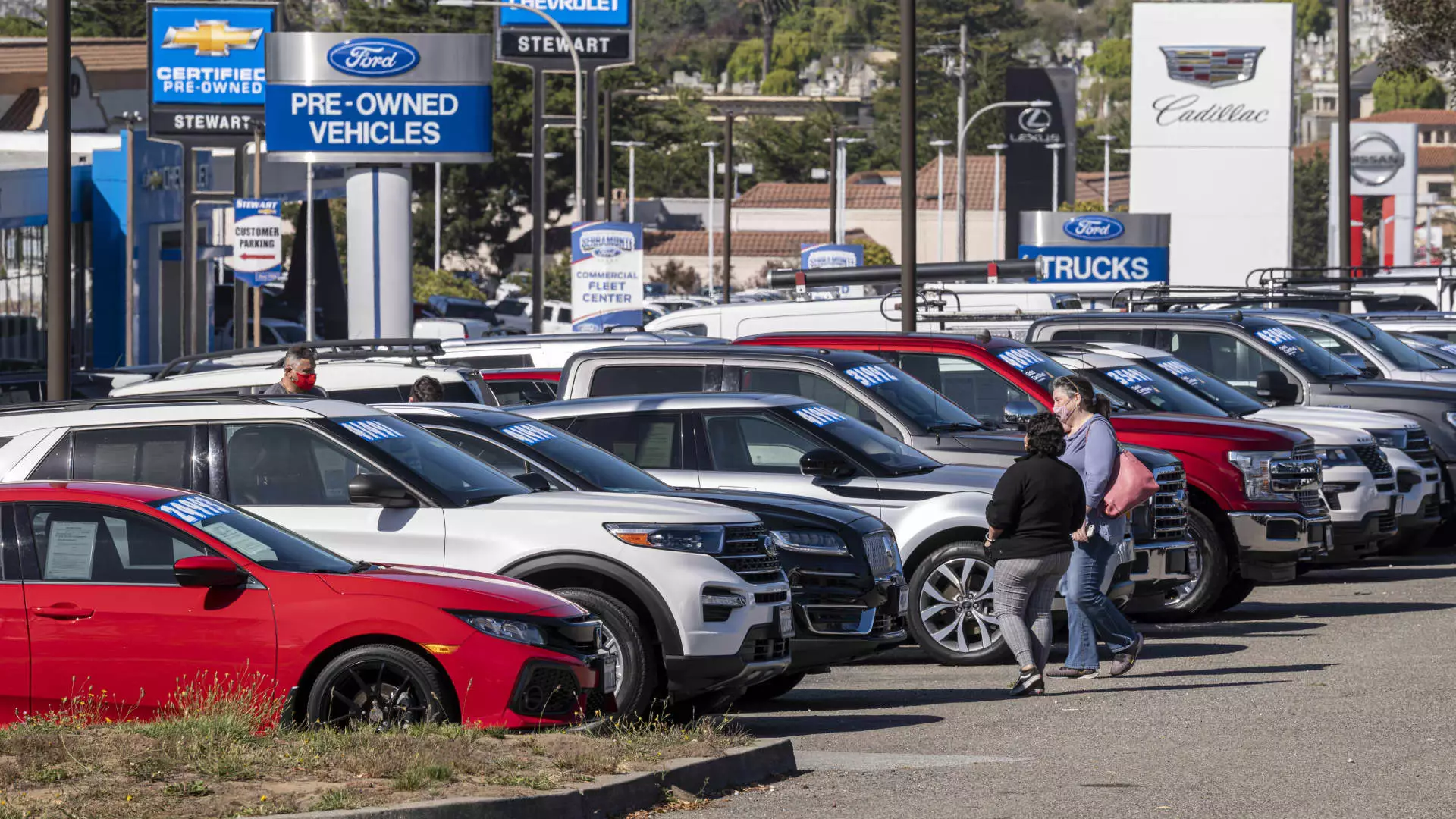Car payments have seen a significant increase in recent years, driven by a combination of factors such as high prices and high interest rates. According to Moody’s Analytics, as of May, the average monthly auto loan payment stood at $760, marking a 40% increase from the $535 average payment back in May 2019. Additionally, a substantial number of car owners, around 17%, are now paying over $1,000 a month for their vehicles, as reported by Edmunds.
Negative Equity and Depreciation
Many customers who purchased vehicles during the peak of the Covid-19 pandemic are now facing negative equity on their cars, with the loan amount exceeding the vehicle’s current value. This negative equity has reached record levels in 2024, with 23% of customers having an average negative equity of more than $6,167, according to Edmunds. The sharp decrease in used car prices from the pandemic highs has led to high rates of depreciation, exacerbating the negative equity issue for many car owners.
Trading in a vehicle with negative equity often results in rolling over the balance owed into the new auto loan, leading to higher monthly payments with longer terms and higher interest rates. Edmunds reports that in the first quarter of 2024, the average payment with a trade-in was $736, with an average interest rate of 7.1% for 68 months. For trade-ins with negative equity, the average payment rose to $887 at a rate of 8.1% for nearly 76 months, creating a cycle of higher payments and longer debt for consumers.
Relief for Car Shoppers
While the situation may seem dire for car buyers, there is some relief in the form of increased incentives offered by manufacturers. Incentives have risen by 81% over the past year according to Moody’s, providing customers with discounts, interest rate subvention, and trade-in allowances to help offset the high costs. However, the Federal Reserve’s influence on interest rates remains uncertain, with any rate changes taking about six months to reflect in auto loan rates. Moreover, inflation continues to push vehicle prices higher, contributing to the overall increase in car payments.
Despite the temporary relief provided by incentives, the long-term outlook for car payments remains bleak. Structural changes in the auto market are expected to keep prices and payments elevated for years to come, with industry experts warning that significant decreases in car payments may not be seen until after this year. As such, consumers are likely to continue facing the burden of high car payments for the foreseeable future.
The surge in car payments over the past few years has created financial challenges for many consumers, leading to negative equity, higher monthly payments, and longer debt terms. While incentives offer some respite, the overall trend of high car payments is expected to persist due to various economic factors. Car buyers should carefully consider their financial situation and explore all options available to mitigate the impact of rising car costs.

